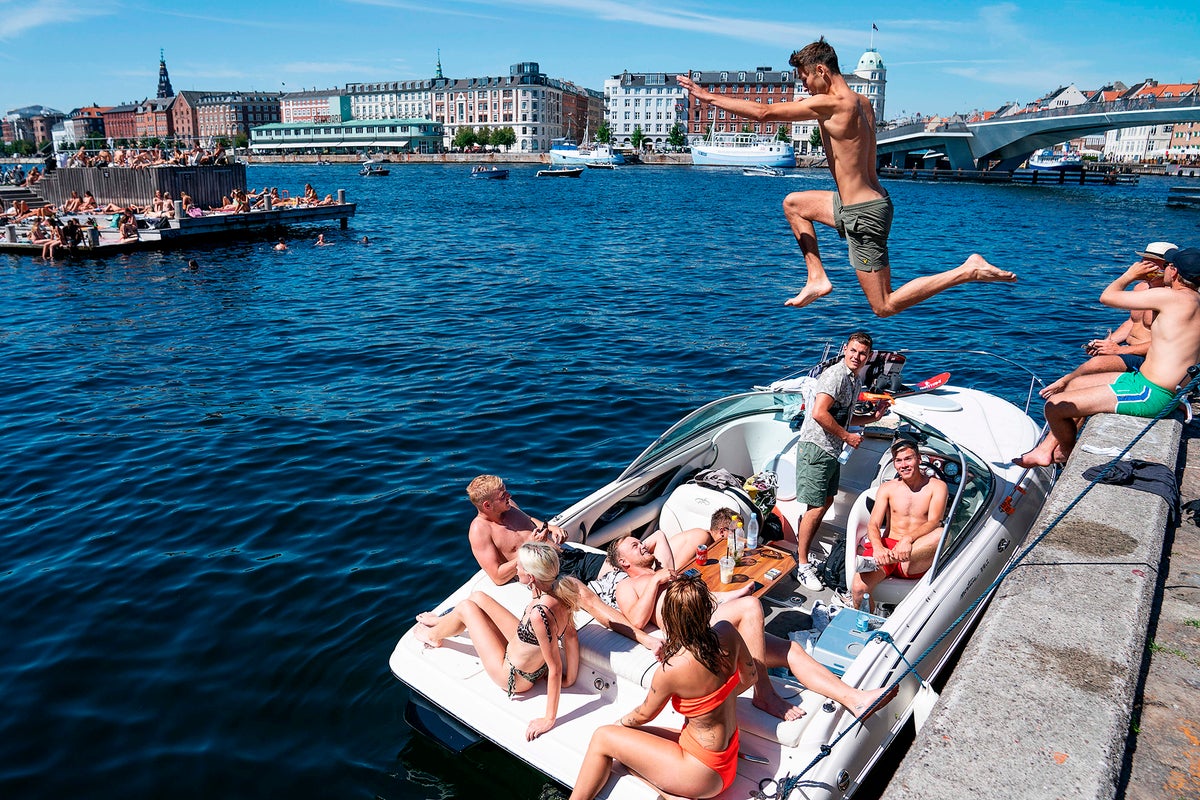Your support helps us to tell the story
From reproductive rights to climate change to Big Tech, The Independent is on the ground when the story is developing. Whether it’s investigating the financials of Elon Musk’s pro-Trump PAC or producing our latest documentary, ‘The A Word’, which shines a light on the American women fighting for reproductive rights, we know how important it is to parse out the facts from the messaging.
At such a critical moment in US history, we need reporters on the ground. Your donation allows us to keep sending journalists to speak to both sides of the story.
The Independent is trusted by Americans across the entire political spectrum. And unlike many other quality news outlets, we choose not to lock Americans out of our reporting and analysis with paywalls. We believe quality journalism should be available to everyone, paid for by those who can afford it.
Your support makes all the difference.Read more
It’s hot. So hot, in fact, that my shins are currently sweating – something I didn’t know was possible.
Having relocated to the UK after 12 years in Denmark, I’m not prepared for this. Not because Scandinavia doesn’t experience heatwaves – this summer, Finland has had three straight weeks of 30C heat, and the Arctic Circle has recorded a fortnight of record-busting temperatures – but because they are better equipped at dealing with it.
That might seem strange, because Scandinavian homes are designed to keep the heat in rather than keep it out, and there are no air-conditioning units in sight. But Vikings handle the heat by taking to the water.
In Denmark, you’re never more than 50km from the sea. Sailing was the most important way to get around in Viking times – when land divided people and sea connected them.
Aside from Jutland’s 42-mile boundary with Germany, Denmark is entirely surrounded by water and made up of 406 islands (more, even, than Greece). This means that many Danes have access to the ocean or a body of water.
Because Danes have a shorter working week (37 hours officially, though the average Dane puts in 33 hours, according to the Organisation for Economic Cooperation and Development), they can fit in a second shift of leisure activities after clocking off in summer. With office hours typically falling between 8am to 4pm, you can be on the beach with your picnic before the asphalt starts to crack.
There, Danes go paddleboarding. Or kayaking. Or windsurfing. Or actual surfing, in “Cold Hawaii” (Klitmøller). And clean water means you can swim pretty much everywhere (unless there’s been a major downpour churning up something unsavoury).
I’m currently at the mercy of sadistic Instagram algorithms showing me Copenhageners executing perfect pencil-dives into city bathing spots – in their lunch hour. Worse: I’m still in a WhatsApp group with fjord-side friends in my old hometown of Vejle who are planning a BYOB “sip and dip” tomorrow. I hope they have a lovely time. Obviously, I’ll be submerging in the Thames in solidarity.
It’s not just Danes who are drawn to the water: Norwegians have a strong tradition of wild swimming year-round and Swedes spend summer sloping toward the nearest lake, clad in only a towel or robe.
There’s less prudishness around the body in Scandinavia, and while some stretches of beach near where I lived were nudist-designated, others were just “free-spirited”. A quick naked dunk in the fjord would scarcely raise an eyebrow – and with sea temperature still a bracing 16.5C, you could cool off in no time.
Scandinavia’s famously informal culture, with its lack of hierarchy, means there’s no need to dress in anything too uncomfortable or constricting, even when clothes are required. It’s perfectly acceptable to work wearing not very much and sleep in less.
Thanks to the tradition of single duvets on double beds, Scandinavians enjoy a more comfortable night, too. This can seem odd to outsiders but makes perfect sense if, for example, you have a spouse who likes to be weighed down by several dozen togs while you slowly broil to death overnight. With the Scandinavian duvet system (SDS), each has the tog they desire or can do away with the duvet part altogether (I like just an empty cover at this time of year… TMI?).
Come morning, Danes get going before the heat does, with schools and work starting at 8am. Smart friends proof their house for the day, with bedroom blinds down, windows closed and “crossflow” saved for once the sun’s gone down. Danish, which gave us the concept of hygge is also responsible for luften – the act of “airing”. (There’s a general obsession with frisk luft, or “fresh air”. )
Of course, at the height of summer, it’s light until 11pm. The sun then rises to a deafening dawn chorus circa 4am. A sleep-deprived delirium ensues every year, regardless of the temperature. And yet, rather than adopting the foetal position and whimpering (my impulse), Danes just seem to cope.
Possibly because they’re caffeinated out of their minds. Danes are among the highest consumers of coffee globally. Friends visiting last weekend drank coffee solidly from 8am until midnight (and they were still more laidback than me).
Deprived of such stimulants, I asked my three Danish-born and bred children for their overriding memories of surviving hot days in Denmark. The youngest answered instantly: “Ice cream for breakfast!” The others nodded. I have no recollection of this. Then again, I might have been particularly sleep-deprived.
Still, a night under a single Scandi duvet, a double latte and a quick dunk should have me back on track by tomorrow. Failing that? Ice cream for breakfast might be a good shout.
Helen Russell is the author of How to Raise a Viking: The Secrets of Parenting the World’s Happiest Children, out now in paperback, published by 4th Estate
